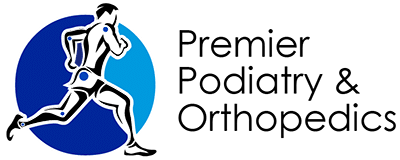Bunionettes
Whereas bunionettes are sometimes referred to as being “tailors’ bunions,” you definitely do not have to earn your living making clothing alterations to develop this toe condition. Much like the related bunion, the bunionette toe deformity is marked by joint instability and a wayward toe that combine to cause an often painful condition on the side of your foot.
What Is a Bunionette?
This particular condition is very similar to a bunion that can develop on the other, inner side of your foot. In this case, though, it’s the little toe, and not the big toe, that comes out of alignment and creates a painful bump at the joint where the toe connects to the foot. This joint is the metatarsophalangeal (MTP) joint, and it starts to protrude to the outside as the little toe drifts inwards and the fifth metatarsal bone begins to angle outwards. This creates a sideways “v”-shape between the two bones, with the point of the “v” being the instable MTP joint.
Bunionettes become irritated and painful when they face excessive friction or pressure, and this can be a natural consequence of wearing shoes that are either too tight in the toe box, or place excessive pressure on the front of the foot (like high-heeled shoes do). This can cause redness and swelling in the area on account of soft tissues becoming inflamed.
How Are Bunionettes Treated?
There are two different courses of treatment for a troublesome bunionette, and we typically begin with the use of conservative (non-surgical) methods, which include:
- Ice – You can relieve pain and inflammation in the affected areas with an icing regimen.
- Medication – Oral medications to relieve bunionette pain include nonsteroidal anti-inflammatory drugs like naproxen sodium or ibuprofen. We can also inject corticosteroids to help reduce the levels of pain and inflammation in the tissue around the affected toe joint.
- Padding – Wearing shoes can be rather uncomfortable when you have a bunionette, but bunion pads can lessen the irritation and discomfort you would otherwise experience.
- Orthotics and Shoe Modifications – In some cases, all you need is a change in footwear. Switching from high-heeled footwear to more sensible models is a good starting point. Going hand-in-hand with footwear choices, orthotic devices (customized by our professionals) are sometimes prescribed to help the condition.
When conservative treatment does not provide enough symptom relief, we can discuss surgical procedures. Factors to be considered for bunionette surgery include your age, activity level, and the length of recovery (which can differ based on a variety of factors).
You may not be able to actually prevent a bunionette—the condition often develops as the result of inherited foot structure—but you can keep one from becoming more severe. The first step in doing so is to not wear tight shoes with pointy tips that force your toes inward. Instead, choose models featuring deep, wide toe boxes. When you are trying on shoes at the store, make sure you are able to wiggle your toes in them. If you cannot, pick a different shoe. Also, keep in mind that high-heeled shoes place extra pressure on the front of the foot. This can lead to a greater deformity, or contribute to the ongoing irritation of the bunionette.
To help ensure that you are able to find shoes that fit properly all day long, go shoe shopping in the late afternoon or early evening. The reason for this is that feet swell during the course of the day. This means a pair that is comfortable first thing in the morning can be rather tight by the afternoon.
In addition to your footwear choices, your particular gait and/or foot structure may contribute to the worsening of a bunionette. When this is the case, you will likely benefit from a pair of custom orthotics. Our foot specialists can analyze your gait and measure your foot to customize orthotic devices for your unique feet.
When you need professional care for a problem bunionette, Premier Podiatry & Orthopedics is here for you! We will work to find an appropriate treatment to ease your pain and discomfort. For more information on this topic or additional foot care services we provide at our Carmichael, CA office, give us a call at 916-961-3434, or use our online form to contact us today!
Looking to schedule an appointment with a physician?
Carmichael Office
6620 Coyle Avenue,
Suite 202
Carmichael, CA 95608
Roseville Office
576 N Sunrise Avenue,
Suite 230
Roseville, CA 95661
Folsom Office
1580 Creekside Drive,
Suite 100 & 110
Folsom, CA 95630
Social
© Premier Podiatry & Orthopedics. All Rights Reserved. | Privacy Policy
